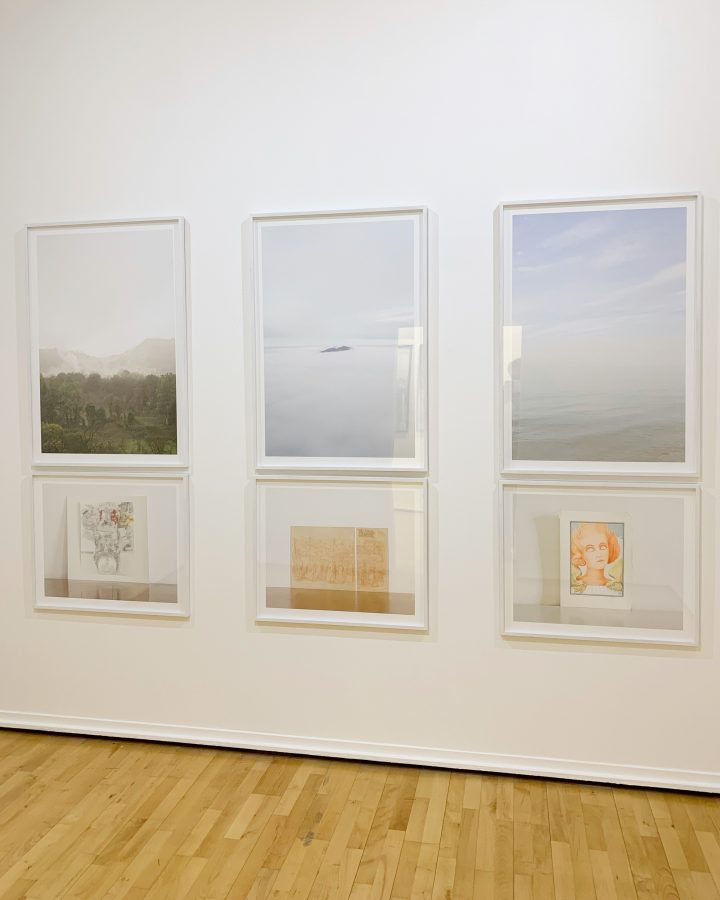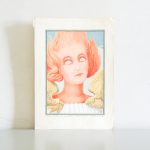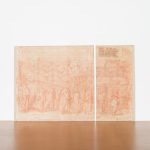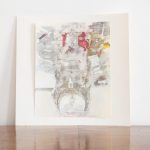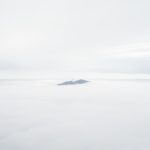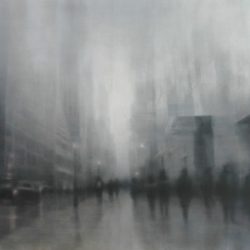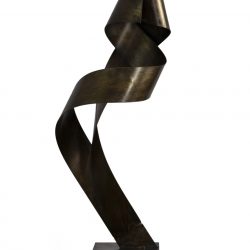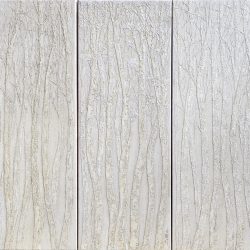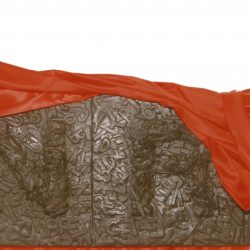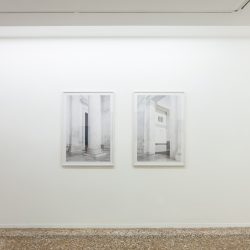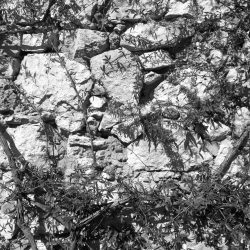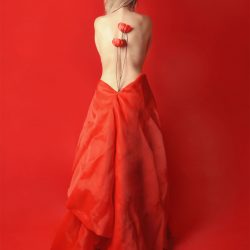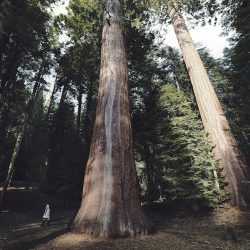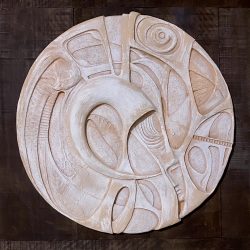work
from the series Concerning Dante – Autonomous Cell, Polyptych
| category | Installation |
| subject | Travels, Landscape, Beauty |
| tags | |
| base | 236 cm |
| height | 180 cm |
| depth | 5 cm |
| year | 2021 |
Concerning Dante - Autonomous Cell
In anticipation of Dante's seventh centenary, for the last two years the artist Jacopo
Valentini (Modena, 1990) has been carrying out a series of visual researches in the field of cultural studies linked to the work, thought and figure of Dante Alighieri and how his influence is central to both academic and popular culture through illustrations, novels, engravings and vernacular references.
popular culture through illustrations, novels, engravings and vernacular references. Currently, through the medium of photography (the use of other visual techniques such as sculpture/installation is also envisaged at a later date), the author is investigating how the cultural influence of the great Italian poet has stratified over the centuries, contributing to the formation of the national identity, as noted by the historian of literature G. Ferroni "at the time of the founding of the Italian Republic, Dante Alighieri was the first poet to be born. Ferroni pointed out that "at the very moment in which he founded his literary language, Dante clearly identified Italy in its turbulent consistency, linguistic, geographical, political, moral, in its hopes and in its failures "1; the same exegesis of the Divine Comedy that followed one another over seven centuries appear today as a "litmus test" of the evolution of Italian society. The artist is concentrating his photographic research on Dante's geography, which goes from the north to the south of Italy, retracing the real journeys made by Dante and the imaginary ones through the events contained in his masterpiece, the Divine Comedy, evoking cities and characters that sometimes the poet did not see with his own eyes "but of which he nevertheless knows how to perceive all the concrete, resistant reality "2. Valentini thus decided to create a work that searches in the Italian landscape for the profound signs of this link and to present the first nucleus of what will be a large body of work for the Cantica21 call for entries. In particular, three symbolic places that the artist interprets as the gates leading to Hell, Purgatory and Paradise, points of contact between the fictional narrative of the Comedy and the reality of the Italian territory, will be visually narrated. The first, the volcanic mouths of the Phlegraean Fields, were for the ancient Romans the cavern of Charon, the ferryman of the souls of the dead beyond the river of Hades, and where Virgil placed Aeneas' descent into the underworld, so much so that it inspired writers and intellectuals such as Stendhal and J. W. von Goethe who passed through it on their Grand Tour. The artist portrays the Pietra di Bismantova as a symbol of Purgatory, following an explicit reference to the text of the fourth canto "Vassi in Sanleo e descendesi in Noli, / montasi su in Bismantova e 'n Cacume / con esso i piè; ma qui convien ch'om voli". The Po Delta, on the other hand, is the representation of Paradise: the place does not have a philological link with the literary work, but is chosen as a visual pretext capable of evoking the suggestions of the text through its suspended and timeless landscape, which seems to refer to Dante's iconographic imagery that over the centuries has been consolidated in common perception thanks to the work of authors such as G. Dorè and A. Martini. For each place, a photographic diptych is being created, each composed of a photograph portraying the specific landscape in a specific visual condition, and a photograph following the stylistic dictates of Natura Morta with the theme of an object or visual element connected to the theoretical and cultural aspects of the place (engravings, watercolours, paintings, three-dimensional objects): the relationship between the two visual elements will be able to recall the visual climax of the Divine Comedy, making it clear how the cultural legacy of the latter has been deeply sedimented in the places. The photographic installation will then be destined for the collection of the Galleria Civica di Modena-FMAV.
text by Carlo Sala
inkjet print, 3+2pa, paper applied on aluminium with white hand-painted wooden frame
In anticipation of Dante's seventh centenary, for the last two years the artist Jacopo
Valentini (Modena, 1990) has been carrying out a series of visual researches in the field of cultural studies linked to the work, thought and figure of Dante Alighieri and how his influence is central to both academic and popular culture through illustrations, novels, engravings and vernacular references.
popular culture through illustrations, novels, engravings and vernacular references. Currently, through the medium of photography (the use of other visual techniques such as sculpture/installation is also envisaged at a later date), the author is investigating how the cultural influence of the great Italian poet has stratified over the centuries, contributing to the formation of the national identity, as noted by the historian of literature G. Ferroni "at the time of the founding of the Italian Republic, Dante Alighieri was the first poet to be born. Ferroni pointed out that "at the very moment in which he founded his literary language, Dante clearly identified Italy in its turbulent consistency, linguistic, geographical, political, moral, in its hopes and in its failures "1; the same exegesis of the Divine Comedy that followed one another over seven centuries appear today as a "litmus test" of the evolution of Italian society. The artist is concentrating his photographic research on Dante's geography, which goes from the north to the south of Italy, retracing the real journeys made by Dante and the imaginary ones through the events contained in his masterpiece, the Divine Comedy, evoking cities and characters that sometimes the poet did not see with his own eyes "but of which he nevertheless knows how to perceive all the concrete, resistant reality "2. Valentini thus decided to create a work that searches in the Italian landscape for the profound signs of this link and to present the first nucleus of what will be a large body of work for the Cantica21 call for entries. In particular, three symbolic places that the artist interprets as the gates leading to Hell, Purgatory and Paradise, points of contact between the fictional narrative of the Comedy and the reality of the Italian territory, will be visually narrated. The first, the volcanic mouths of the Phlegraean Fields, were for the ancient Romans the cavern of Charon, the ferryman of the souls of the dead beyond the river of Hades, and where Virgil placed Aeneas' descent into the underworld, so much so that it inspired writers and intellectuals such as Stendhal and J. W. von Goethe who passed through it on their Grand Tour. The artist portrays the Pietra di Bismantova as a symbol of Purgatory, following an explicit reference to the text of the fourth canto "Vassi in Sanleo e descendesi in Noli, / montasi su in Bismantova e 'n Cacume / con esso i piè; ma qui convien ch'om voli". The Po Delta, on the other hand, is the representation of Paradise: the place does not have a philological link with the literary work, but is chosen as a visual pretext capable of evoking the suggestions of the text through its suspended and timeless landscape, which seems to refer to Dante's iconographic imagery that over the centuries has been consolidated in common perception thanks to the work of authors such as G. Dorè and A. Martini. For each place, a photographic diptych is being created, each composed of a photograph portraying the specific landscape in a specific visual condition, and a photograph following the stylistic dictates of Natura Morta with the theme of an object or visual element connected to the theoretical and cultural aspects of the place (engravings, watercolours, paintings, three-dimensional objects): the relationship between the two visual elements will be able to recall the visual climax of the Divine Comedy, making it clear how the cultural legacy of the latter has been deeply sedimented in the places. The photographic installation will then be destined for the collection of the Galleria Civica di Modena-FMAV.
text by Carlo Sala
inkjet print, 3+2pa, paper applied on aluminium with white hand-painted wooden frame



